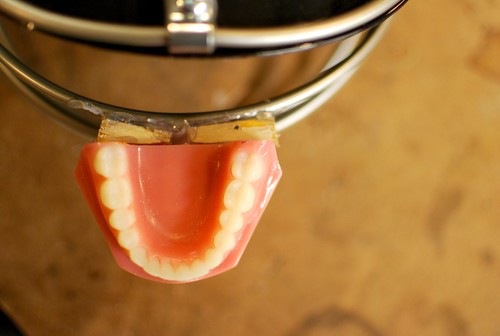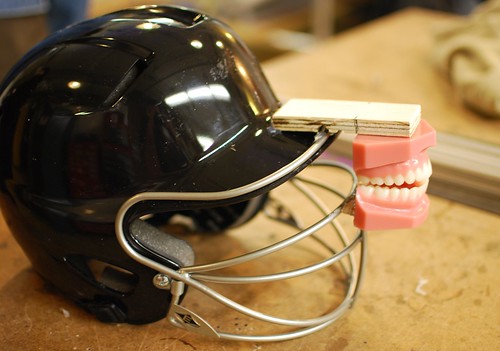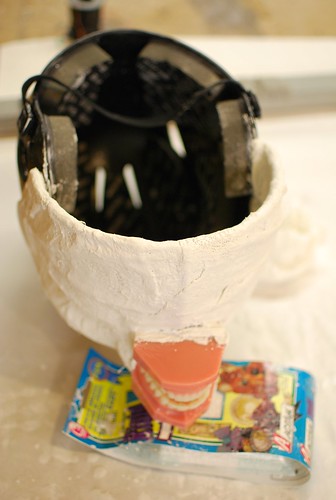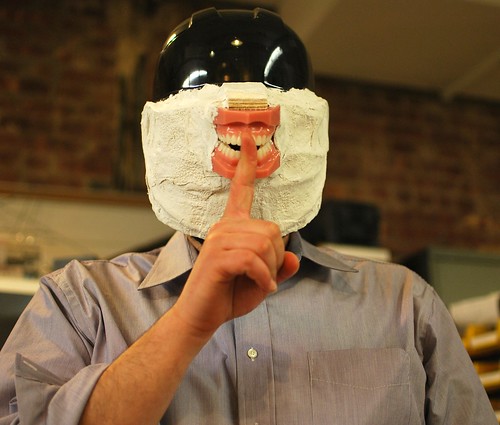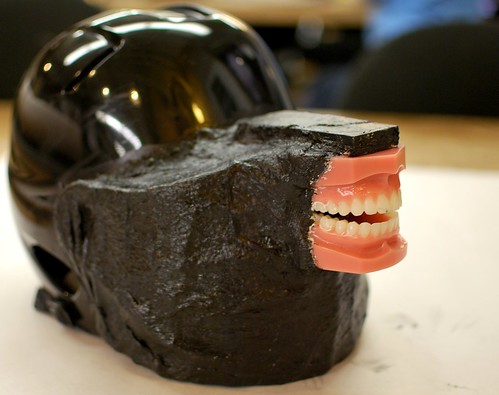For my fourth and final 4-in-4 project, I built something I’ve been planning to make for a long time. A number of years ago, I got this image stuck in my head of what the world would look like if your eyes were on your uvula instead of your face.

What would the world be like if you looked out at if from inside your body rather than the external, nearly detached, viewpoint which our eyes actually inhabit?
Throughout western culture, vision is privileged above the four other senses. It’s the sense we identify with intelligence, perspective, and the soul. It’s also the only sense that we work so hard to detach from the body by extending its reach with cameras, satellites, and ever more fine grained microscopes.
So, I wanted to force vision back into the body. To make it look out from within the wet sloshing meatbags we truly are. To drag it down to the level of the other senses by literally forcing it inside of their associated organs.
I decided to start with the mouth.
I bought a plastic model of dentally perfect teeth from an orthodontic supply website and a rubbery tongue from a Halloween gag shop.
In my first experiments, I used a projector to place fuzzy imagery keyed to the color of outdoor light in the background.
(In that image above, I also manage to photograph the mouth upside-down, as I quickly learned due to a correction from a dental surgeon who happened across the picture on Flickr)
Having made these first images, I wanted a way to make this aesthetic experience more immersive; I wanted a helmet that you could wear that would force you into this position of seeing in the physical world.
This is what I set out to make for day 4 of the 4-in-4 last week.
I started by gathering supplies. In addition to my long-ago acquired dental model and Halloween tongue, I bought a baseball helmet from Kmart and some plaster cloth from Blick.
I attached each half of the dental model to the grill of the helmet with pieces of wood to support them and position them so they’d be realistically in place.
Already at this stage you could start to see how the composition of the final piece would take shape, what it would look like from inside.
Once I had the teeth in place, I used the plaster cloth to close-up the helmet around the teeth, laying it over the mouth guard supports and up to the helmet’s brim.
Once the helmet dried, I tried it on. I found that the view inside was nearly exactly what I’d been hoping for (like stepping into the photograph I’d taken with the projector) except slightly too light. That problem, combined with the emerging aesthetics of the white plaster on the black helmet lead me to decide to paint the plaster black and to finish it with a high gloss acrylic medium so it would match the industrial shine of the helmet.
At this stage, I started having other curious people in the shop try the helmet on as well. One outcome I wasn’t expecting was how striking people look while wearing the helmet. It’s an image that makes me laugh with a shiver of aesthetic delight every time I see it.
Another unexpected effect I discovered when watching other people put the helmet on was that it turned them into performers, acting out various ideas they have of what it would mean to be fully identified with their own mouths.
I finished the helmet by painting the plaster black and giving its outside a coat of glossy gel medium (not shown here, but you get the effect since the black paint was still drying when this photo was taken).
The result was something that, on the outside, looked like a costume from a low-rent recreation of Alien, but on the inside looked a lot like you were occupying the back of a giant’s mouth:
(This video was shot by simply wedging my iphone into the helmet and carrying it around the shop awkwardly. Eventually, I’d like to install handles on the side of the helmet and a hinged tripod mount inside of it so that it would be easier to shoot with a real video camera mounted inside.)
Finishing this project makes me want to build other helmets that push you into the other sense organs: one that would force you to look out from an ear or a nose. In addition to the qualities of the mouth helmet, those would be even more disorienting as they’d have to use periscope-style reflection to angle your vision down (in the case of the nose) or to the side (for the ear). And once I had the whole ensemble together they’d make for great film-making or performance props.


